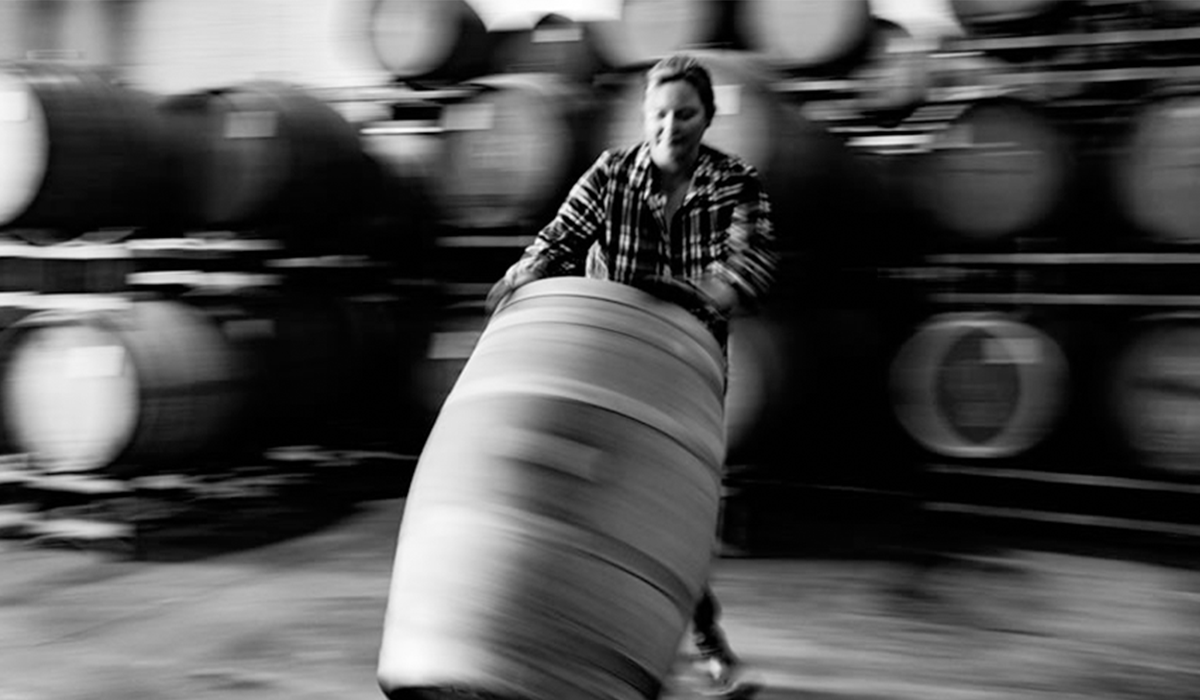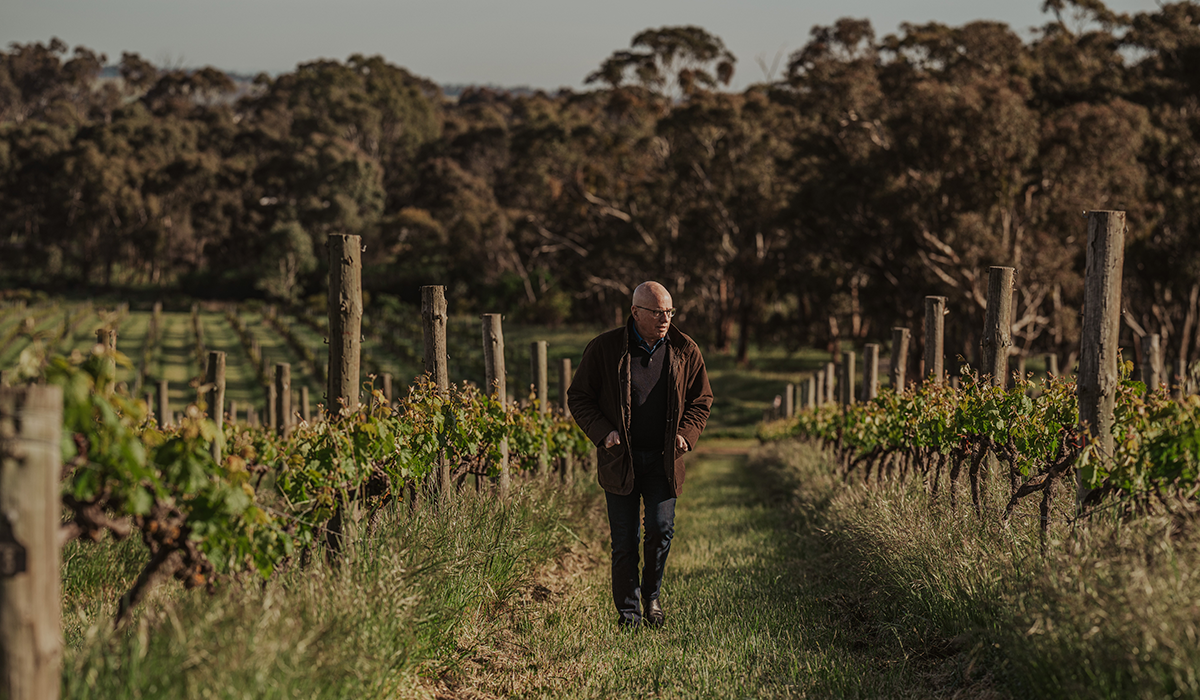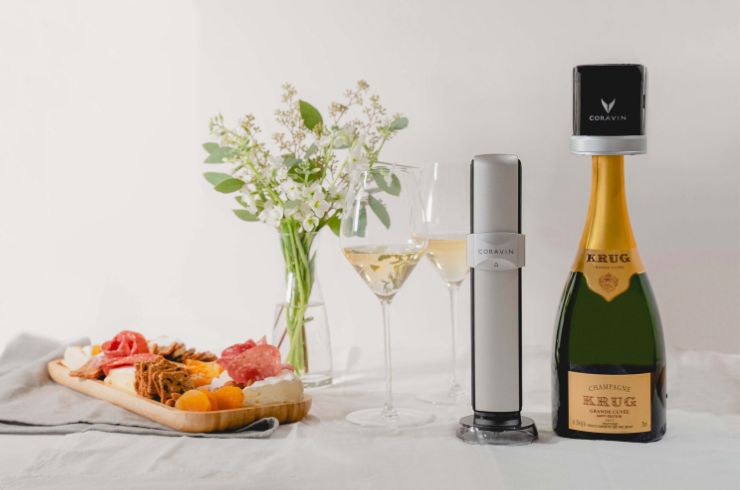Winemaker Marnie Roberts surprised many – including herself – when she decided to leave the established Clare Valley winery Claymore to launch her own family wine brand, Matriarch & Rogue. “Sure, it seems like not much changes in Clare,” Marnie says. “But new ideas and new opportunities are placing us on the nervy edge, where it feels like significant things are about to happen.”
Marnie is stretching far beyond the region’s historical output from a tight cluster of family-owned vineyards to present a more complex tapestry of styles and ideas about wine. Matriarch & Rogue has emerged because it gives Marnie the chance to explore a new crop of emerging grape varieties in her own way – saperavi, nero d’Avola, montepulciano and vermentino.
“I grew up in Mildura and the Alternative Varieties Wine Show really defined my interest in winemaking,” she says. “Now I have ideas about where I want to take these styles. Perhaps there’s a hint of madness about it, but I don’t want to restrict myself. I want to give it 100 per cent.”
Having made her wine in sheds since 2014, Marnie took the decisive step in 2019 of constructing her own winery and quitting her day job to make the new label her sole concern. The move has drawn support from winemaking peers, with many of them also dabbling in side projects that show different sides of Clare’s winemaking personality. It points to a region in a curious state of flux. “Anyone who thinks it’s all just ‘business as usual’ in Clare isn’t looking closely enough,” she says.

The charm of texture
A new generation of wine drinkers has embraced Clare Valley through the Koerner brothers, Damon and Jono, who march a fair distance from conventional Clare winemaking. Inspired by their travels and what they like to drink, Koerner wines explore complex textures ahead of rigid fruit definition, forgoing traditional heavy styles to instead sing a catchy melody of freshness and vibrancy. This translates to Koerner producing two styles of vermentino, plus cabernet franc, petit verdot and sangiovese within a large, eclectic range. Still, after having dabbled in 11 different red varieties, Damon has decided not to work with shiraz, mourvedre or tempranillo anymore. “Their pH levels are too high for the type of wine I want to make, which is all about retaining the natural acids,” he says.
While Damon lives and works in the Adelaide Hills as a viticulturist and makes the Koerner wines there, he says their brand is all about Clare Valley expression. More specifically, it’s focused on the Leasingham subregion – mostly Gullyview vineyard, owned and managed for 40 years by the brothers’ parents, Christine and Anthony Koerner.
The brand’s strong Clare statement is underlined by the recent launch of a cellar door in a room at the side of the Magpie & Stump Hotel in Mintaro, open on weekends. “There hasn’t been any real plan to all this,” Damon admits. “But the popularity of the wines shows the risks we’ve taken have been worthwhile – and we’ll keep pushing further.”
Fresh wines, familiar makers
Many new brands emerging in Clare feature familiar faces. While continuing to helm Kilikanoon Wines, Kevin Mitchell and his wife Kathleen Bourne have started from scratch with their own Woodvale Vintners label. They quickly hit peaks of excellence across their broad suite of wines produced from small parcels of grapes.

The new venture signals a transition for the noted winemaker and shareholder at Kilikanoon, who says working within a large winery with diverse ownership carries a raft of commercial obligations and creative limitations. Starting again with another brand is Kevin’s way of grasping absolute autonomy, chasing the thrills that propelled him as a young winemaker, including nurturing pet loves such as semillon and grenache.
It’s brave, Kevin concedes, but not crazy. “There are some things that I absolutely want to do in wine,” he declares, fixing a stern look. “It’s about going back to a completely hands-on approach, parcel by parcel, reading and treating everything with individual attention. Yes, it’s a lot of work, but there’s deep satisfaction too.”
Woodvale has joined forces with three other small brands to jointly promote their wares as FourPlay at several Clare events. As dedicated riesling cohorts, the like-minded producers of Kirrihill, Andrew Michael at Koonowla and John Hughes of Rieslingfreak, say that standing beside Woodvale to tell their winemaking story has benefits. “It’s a way of showing specific attention to detail that small wine brands focus on,” John says. “We all make riesling, but there are a range of expressions and ideas showing in these wines. It’s one region, one grape variety, but all the wines need to be looked at as individuals. Clare wines do not present such a simple, straightforward story.”

Embracing new varieties
Some established wineries have embraced bold new plantings. Mount Horrocks Wines’ Stephanie Toole has made a fist of nero d’avola, having planted the dark Sicilian grape variety in 2006, and made adjustments and adaptations to the wine style with each vintage since 2011. Increasing vine age brings more taut power to the fruit, and she picks earlier to capture bright acidity that lets the spice and liquorice notes shine through its bright cherry and plum notes. “There’s so much possibility with this wine. That’s what excites me,” Stephanie says. “I just feel that I’m starting to get familiar with what style is most appropriate for this site, and there’s a fascinating journey ahead.”
Her partner Jeff Grosset blends his nero d’avola with shiraz for the Grosset Nereus – a new style he first released two years ago from the 2014 vintage. It shocked many wine industry pundits for introducing a radically different Clare signature to his range of fastidiously made wines, along with the Grosset Apiana Fiano (released for the first time in 2014).
Jeff embraced these different varieties because he looks at global warming as a serious game-changer and a crucial reason to keep experimenting. He is working to find the best and most appropriate varieties for each patch of dirt – a big part of the terroir story Jeff has long showcased in his Grosset wines. “If I’m going to keep telling the story of these wine sites truthfully, I have to keep reading carefully and adapting,” he says.

Offshoots to an old family tree
New buds are branching out from the rootstock of famous family companies – most notably a cheeky outcrop of Barrys in enterprises across Clare. Winemaker Mark Barry left Jim Barry Wines in 2005, and started his own wine label Mad Bastard in 2010. With a wry grin, Mark says it’s a brand that reflects his true personality, in name and maverick spirit.
His brother John Barry is making Reg & Co wines, promoting itself as part of the Lightbulb Collective, another cluster of boutique brands presenting collaborative tasting events. And Julie Barry has dabbled for many years with her Good Catholic Girl label, a side project she started by picking a parcel of shiraz in 2005 from the vineyard she planted in the Armagh subregion of Clare. It has since become a much more serious endeavor, with the range expanding to five varieties, and the opening of a cellar door tasting cottage on the main highway at Sevenhill. “We all have our own ideas and own way of wanting to do things,” explains Julie.

Within Jim Barry Wines, there is also change as the next generation’s ideas are coming to the fore. Jim Barry’s grandsons Tom and Sam are steering the direction of new wines, including The Barry Brothers Shiraz Cabernet Sauvignon, and single vineyard reds, in addition to driving the Clos Clare label owned by the Barry family. More change in Clare looms just over the horizon, when Warren Randall announced plans to plant new mataro vines on the expanded Quelltaller property he acquired in 2019. Pay attention: it’s the ‘quiet’ regions you need to keep a close eye on.
This article first appeared in issue #43 of Halliday magazine, become a member to receive six issues annually.



